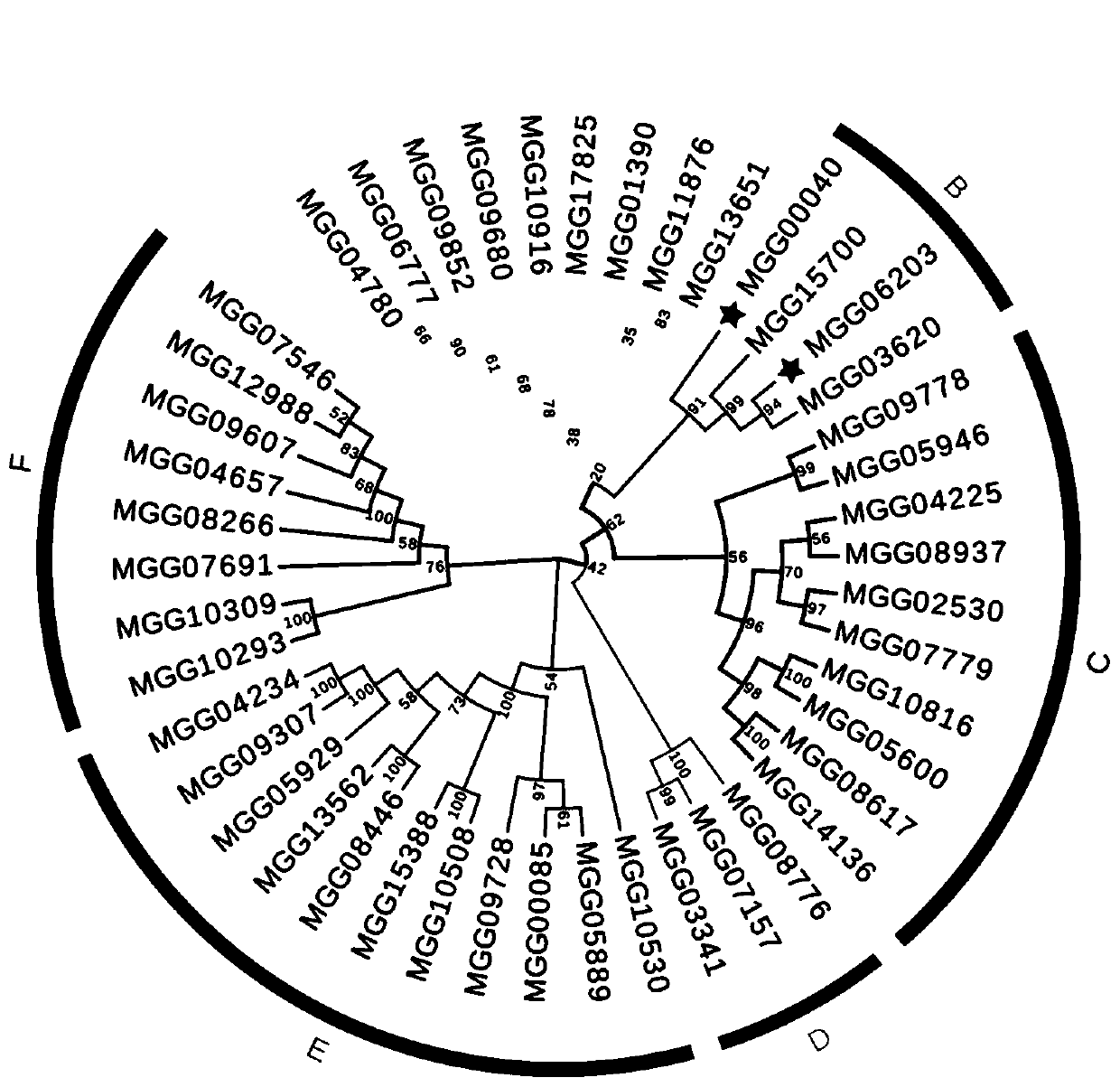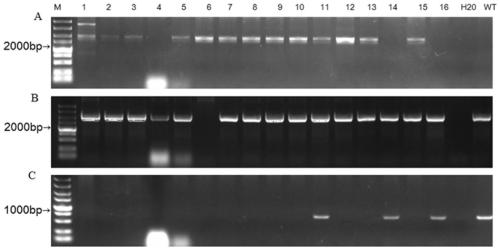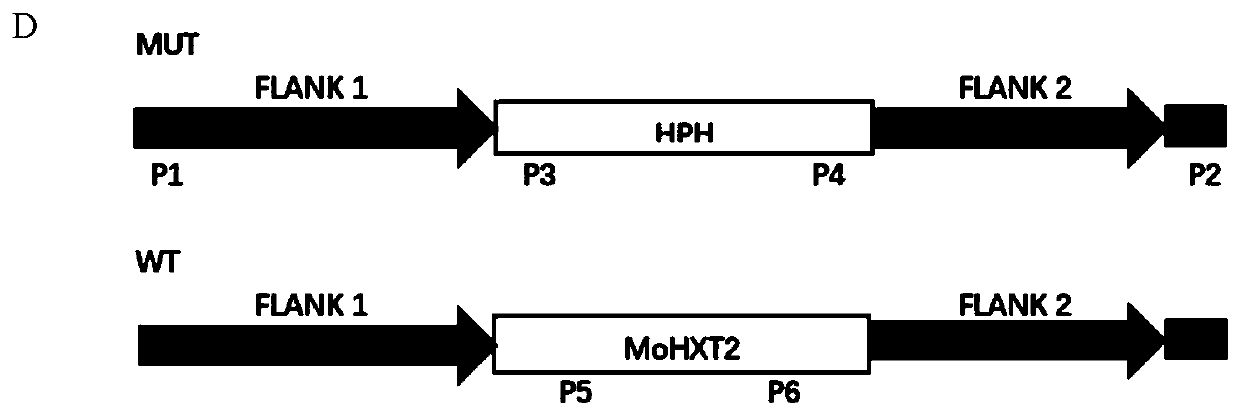Application of magnaporthe grisea gene MoHXT2 in regulation and control of botanical glycoside transport function
A technology of rice blast fungus and plant sugar, applied in the fields of application, plant products, genetic engineering, etc., can solve the problems of increased resistance of pathogenic bacteria, large environmental pollution, and increased cost of medication, and achieve reduced pathogenicity and lower hyphae melanin content Reduced effect
- Summary
- Abstract
- Description
- Claims
- Application Information
AI Technical Summary
Problems solved by technology
Method used
Image
Examples
Embodiment 1
[0102] Example 1 Knockout and Identification of MoHXT2 Gene Mutants
[0103] (1) Amplify the target fragment
[0104] Inoculate the wild-type blast fungus WT into CM solid medium, place it in a 28°C incubator and grow in the dark for 5 days, collect the mycelia, then cut the mycelia into pieces and evenly distribute them into 50mL CM liquid medium, 28 ℃, 160rpm, after cultivating for 48 hours, collect mycelia, wash with sterile water and extract the genomic DNA of wild-type Magnaporthe grisea WT (DNA extraction is fungal genomic DNA extraction kit M5Fungal Genomic DNA Kit fungal genomic DNA extraction kit purchased from Beijing Jumei Biotechnology Co., Ltd.), stored at -20°C. Using it as a template, primers Flank1F / R and Flank2F / R were used to perform PCR amplification on the upstream and downstream homology arm sequences of the MoHXT2 gene (SEQ ID NO.1). The concentration of genomic DNA (gDNA) amplification was 5ng / μL, using The following reaction mixture: 2 μl 1× Taq buffe...
Embodiment 2
[0154] The growth situation of embodiment 2 Mohxt2 on different carbon source medium
[0155] (1) The mutant Mohxt2 obtained by screening in step (3) ⑤ of Example 1 (in this experiment, the knockout transformants of lane 2, lane 7 and lane 9 were selected and named in turn as ΔMohxt2-2, ΔMohxt2-7, ΔMohxt2-9 , and the wild-type WT strain as a control) were cultured on CM medium for 5 days, and the mycelium blocks were punched out with a 3 cm diameter hole punch along the edge of the colony, and transferred to different carbon sources (glucose, galactose, Mannose, fructose; The concentration is 2% (w / v); The monosaccharides used in the experiment were all purchased from Sigma) for growth observation on the CM solid medium, repeated three times. The difference in black accumulation was observed after culturing for 5 days. Differences between the wild-type WT strain and the mutant Mohxt2 on different carbon sources were observed on CM solid medium ( Figure 4 ). At the same tim...
Embodiment 3
[0187] Example 3 Mohxt2 pathogenicity analysis
[0188] The mycelia block of the mutant (Mohxt2-9) obtained by screening in Example 1 was inoculated on rice straw medium (RDC) (recipe is as follows: rice straw 100g, corn flour 40g, agar powder 15g; preparation method is: 100g rice straw Add the stem to 1L of sterile water and boil for 20 minutes, filter with gauze to obtain the filtrate, dissolve corn flour and agar, add water to 1L of high-temperature sterilization) to multiply, and after black light irradiation for 5 days, wash the spores with sterile water for microscopic examination ( Figure 8 ), inoculated on isolated rice leaves (rice CO39 (resistant variety), Rice Institute of Guangdong Academy of Agricultural Sciences), and took pictures for observation and pathogenicity analysis after infecting for 96 hours. Compared with the wild-type strain WT, the pathogenicity of ΔMohxt2 in the resistant variety CO39 was significantly reduced ( Figure 9 ).
[0189]In order to ...
PUM
 Login to View More
Login to View More Abstract
Description
Claims
Application Information
 Login to View More
Login to View More - R&D
- Intellectual Property
- Life Sciences
- Materials
- Tech Scout
- Unparalleled Data Quality
- Higher Quality Content
- 60% Fewer Hallucinations
Browse by: Latest US Patents, China's latest patents, Technical Efficacy Thesaurus, Application Domain, Technology Topic, Popular Technical Reports.
© 2025 PatSnap. All rights reserved.Legal|Privacy policy|Modern Slavery Act Transparency Statement|Sitemap|About US| Contact US: help@patsnap.com



